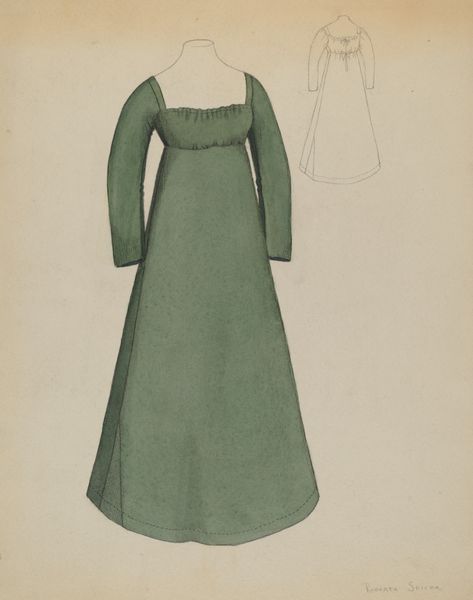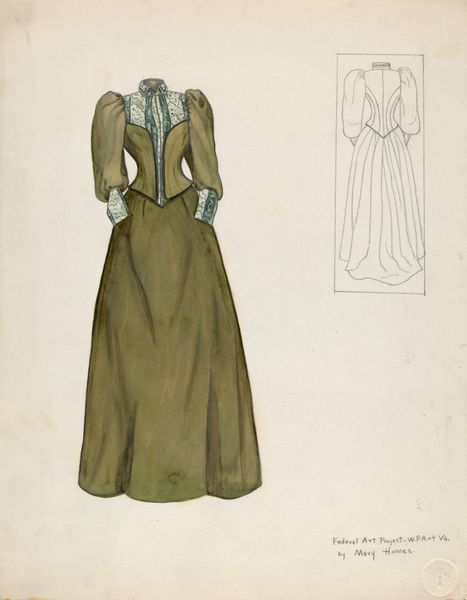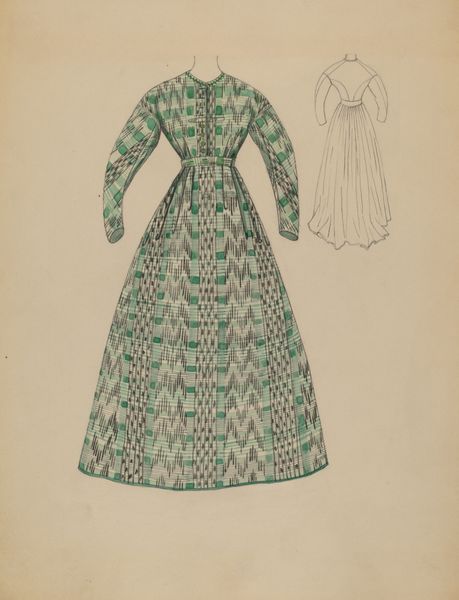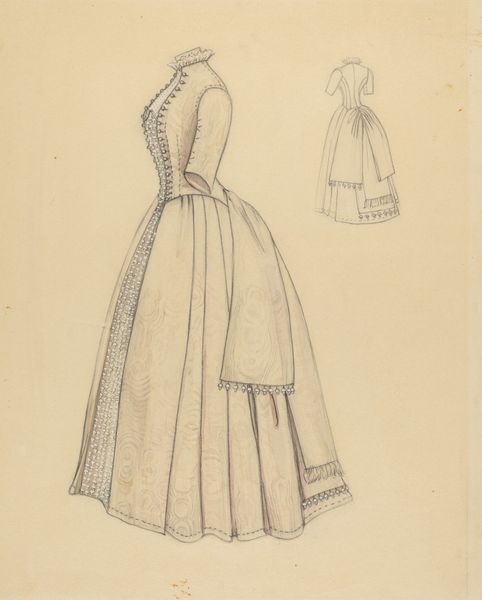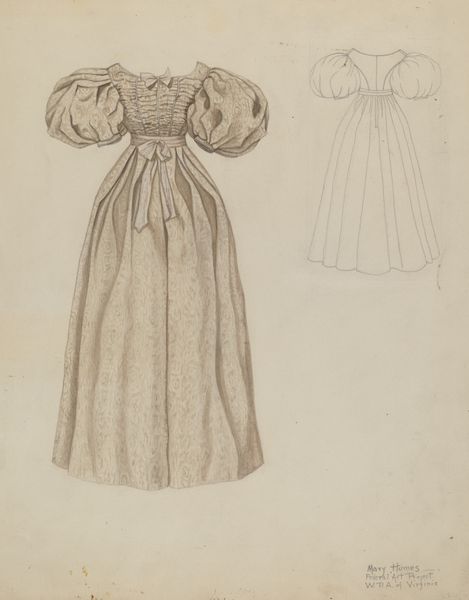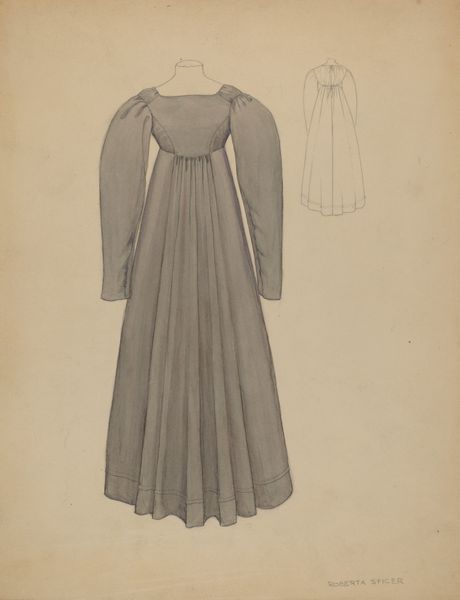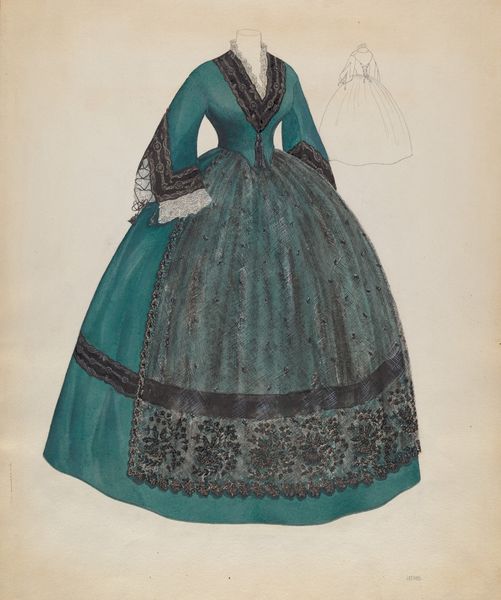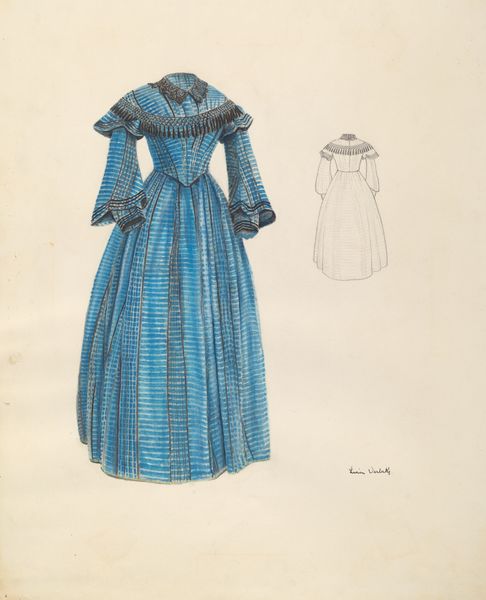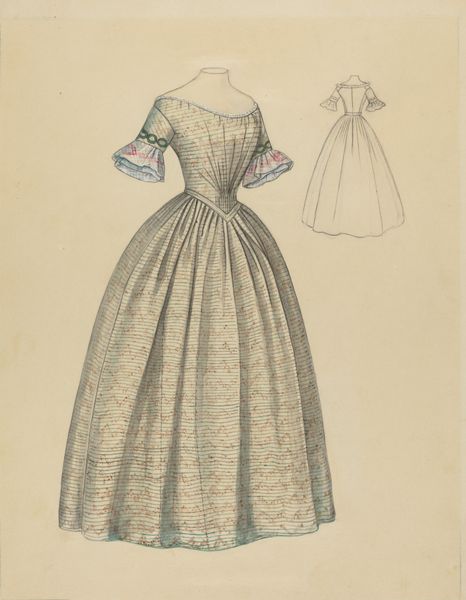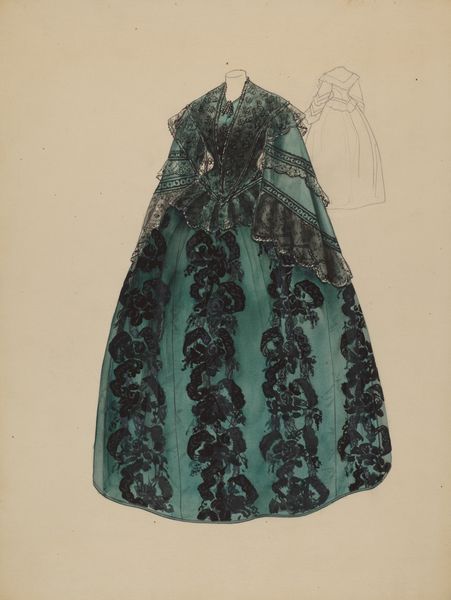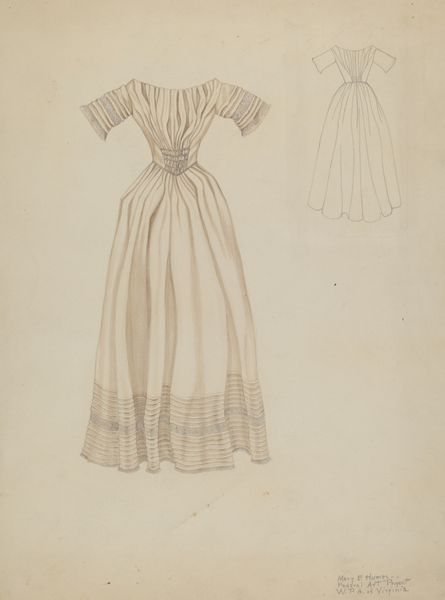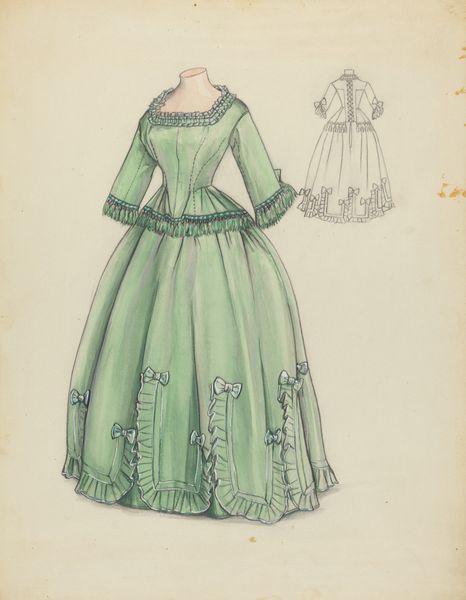
drawing, paper, watercolor
#
drawing
#
figuration
#
paper
#
watercolor
#
coloured pencil
#
underpainting
#
watercolor
Dimensions: overall: 30.5 x 23 cm (12 x 9 1/16 in.)
Copyright: National Gallery of Art: CC0 1.0
Editor: Here we have Jean Peszel’s “Dress,” made with watercolor and drawing on paper between 1935 and 1942. There’s a rather muted quality to the watercolor, and I’m struck by the design: a simple, elegant gown next to what seems to be a rough sketch of another dress. What do you see in this piece? Curator: I’m drawn to the clear labor that went into both the garment design itself and its representation here. The subtle gradations of color achieved with watercolor, the delicate lines defining the pleats and folds – these speak to hours of careful craftsmanship, both conceptually and in terms of artistic creation. Editor: I hadn’t thought of it that way, seeing it as labor. But it is a design drawing after all, meant for pattern making and such. Does the rendering medium itself carry any significance for you? Curator: Absolutely. Watercolor and drawing, often perceived as less ‘precious’ than oil paint or sculpture, can be powerful tools to dismantle traditional hierarchies in art. It highlights the artist's conscious choice to prioritize process, accessibility and everyday subject matter over traditional, elitist media. Who do you imagine it would have been worn by and where? Editor: Perhaps the dress was designed for a wealthy woman for formal occasions, a subtle yet elegant expression of status. Is there anything else we should consider to fully appreciate this drawing? Curator: The social context is crucial. This was made during the interwar period and into the early years of WWII, impacting the access to fabric and materials and a potential revival of "make do and mend" attitudes. The simple style and reusable design perhaps reveal some material anxiety that might speak to its own moment in time. It prompts us to question who was creating and consuming fashion and for what purposes, against a backdrop of evolving social and economic realities. Editor: So by examining the materials and social context, we move beyond simply admiring its beauty, and towards understanding the artistic and economic conditions surrounding its creation and perhaps the implications to come. Thanks for this fascinating insight. Curator: Indeed! Analyzing this drawing allows us to see fashion, and even 'high art', not in isolation, but as intricately linked to wider societal shifts.
Comments
No comments
Be the first to comment and join the conversation on the ultimate creative platform.
